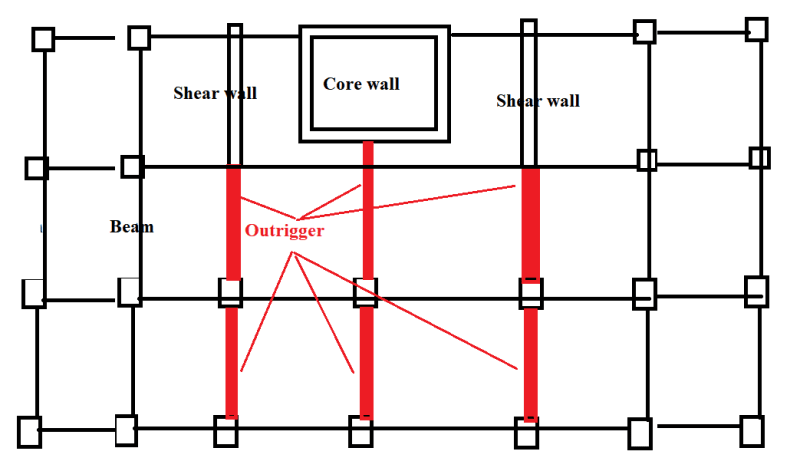NewbieInSE
Structural
Dear Engineers,
As metioned by Taranath in his book, outriggers can be of shallower depth (rather than one or two storied deep) when used in each floor. That's how we did in a project. The building is 25 storied.
Outriggers usually engage the perimeter frames in bending with core walls.
Now, I modelled such outrigger beams using frame element (24X40 inches). The outrigger spans are like of 24 ft. order. In this situation, I found that the beams don't have any axial forces in them. The building drift for wind is in the order of 1/200.
Again, I modelled those using shell element. Now the outriggers have tension/compresison forces such as 750 kips. Building drift comes down to 1/500 order.
Now, which is the correct modelling approach? Shell or frame? And are outriggers supposed to have axial loads in them?
As metioned by Taranath in his book, outriggers can be of shallower depth (rather than one or two storied deep) when used in each floor. That's how we did in a project. The building is 25 storied.
Outriggers usually engage the perimeter frames in bending with core walls.
Now, I modelled such outrigger beams using frame element (24X40 inches). The outrigger spans are like of 24 ft. order. In this situation, I found that the beams don't have any axial forces in them. The building drift for wind is in the order of 1/200.
Again, I modelled those using shell element. Now the outriggers have tension/compresison forces such as 750 kips. Building drift comes down to 1/500 order.
Now, which is the correct modelling approach? Shell or frame? And are outriggers supposed to have axial loads in them?

